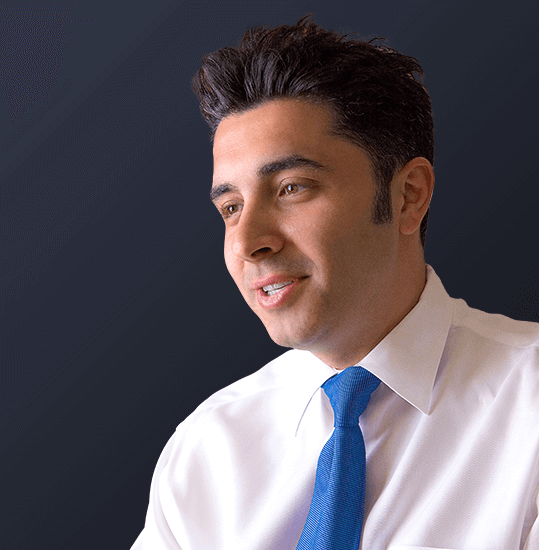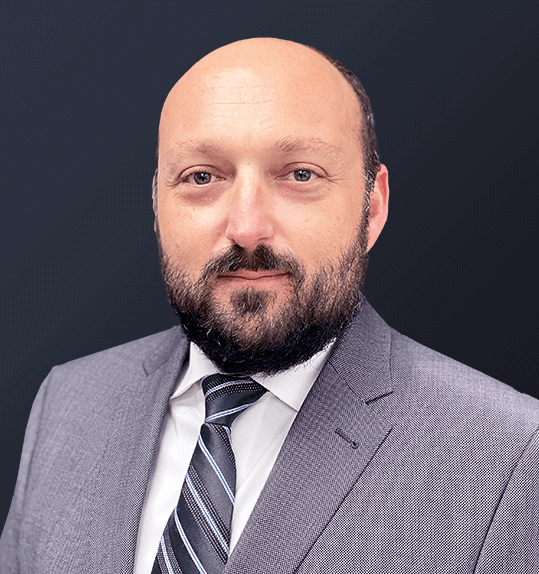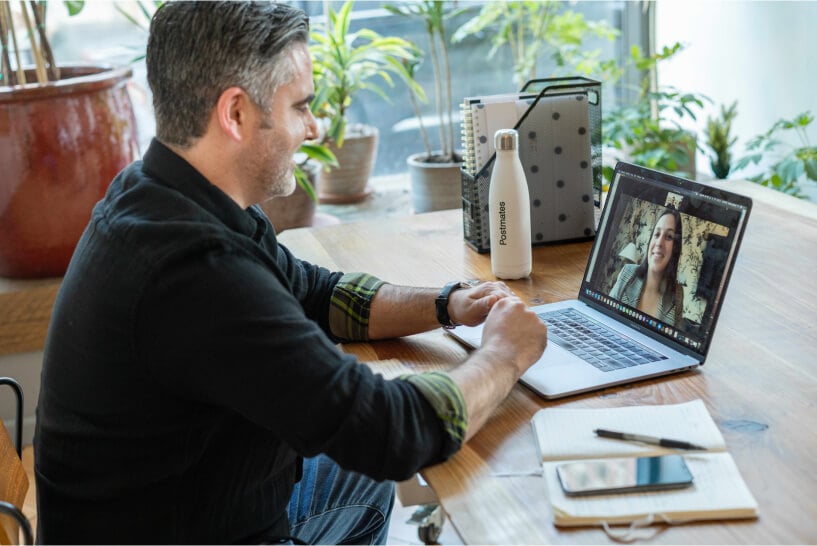California
Pedestrian Accident Lawyers$10 MM +
Recovered for Clients
1000 +
Injured Clients
3.5 ×
Higher compensation*
No Recovery.
No Fee.

Pedestrian accidents in California are unfortunately all too common, resulting in severe injuries, emotional trauma, and life-altering consequences for victims. If you or a loved one has been involved in a pedestrian accident, seeking legal counsel from an experienced California pedestrian accident lawyer can make a significant difference in your recovery and pursuit of justice.
To those who have felt the sudden shock, the physical pain, and the emotional turmoil of a pedestrian accident, know that you’re not alone. At Vaksman Khalfin Law Firm, we understand the overwhelming journey you face after such a traumatic event. Your safety matters, and your recovery is our priority. We extend our heartfelt support and legal expertise to guide you through this challenging time.
Understanding Pedestrian Accidents in California
California, with its bustling cities and high pedestrian traffic, witnesses numerous accidents involving pedestrians each year. Whether it’s due to distracted driving, speeding, failure to yield, or other forms of negligence, these accidents can result in catastrophic injuries for pedestrians who have little protection against the impact of a vehicle.
Why You Need a California Pedestrian Accident Lawyer
Navigating the legal complexities following a pedestrian accident can be overwhelming, especially when dealing with injuries, medical bills, and emotional distress. A skilled California pedestrian accident lawyer serves as an invaluable ally, offering:
Legal Expertise
A knowledgeable attorney understands California’s traffic laws, insurance regulations, and liability statutes related to pedestrian accidents. They use this knowledge to build a robust case on your behalf.
Investigation and Evidence Gathering
A proficient lawyer will conduct a thorough investigation into the accident, gathering crucial evidence such as eyewitness statements, accident reports, surveillance footage, and expert testimony to strengthen your claim.
Negotiation and Advocacy
They will skillfully negotiate with insurance companies and, if necessary, represent you in court, advocating for fair compensation for your injuries, medical expenses, lost wages, pain and suffering, and other damages.
What to Expect When Working with a Pedestrian Accident Lawyer
Before contacting a pedestrian accident lawyer, you can be unsure and worried about the next steps and processes. The procedures may seem unclear to you, but they needn’t be. The process at Vaksman Khalfin is straightforward and focused on your needs and priorities:
- Initial Consultation: A chance to discuss your case in detail, allowing the attorney to assess its merits and provide you with guidance on the legal options available.
- Case Preparation: Thorough preparation and strategizing, including evidence gathering, witness interviews, and legal analysis.
- Legal Representation: Effective representation in negotiations or litigation, ensuring your rights are protected and advocating vigorously for your best interests.
Robert B. Vaksman, Esq.
Founding Partner
“Some cases are easier than others, but this doesn’t matter at Vaksman Khalfin, because we have the resources to help our clients no matter what is at stake, especially if it’s hard."

ALAN D. KHALFIN, ESQ.
Partner & Managing Attorney
"People call me when they need to plan, but also when something terrible has happened and they need help. It is personal to my clients, so it is personal to me. We have to help — no matter what."

California Pedestrian Laws: Your Rights and Responsibilities as a Pedestrian
California has specific laws in place to protect pedestrians and ensure their safety on the roads. Familiarizing yourself with these laws is essential for both pedestrians and drivers to prevent accidents and navigate shared spaces harmoniously.
Right-of-Way
Pedestrians have the right-of-way when crossing at marked or unmarked crosswalks, whether or not traffic signals are present. They should yield to vehicles if they are crossing outside of a crosswalk.
Pedestrian Signals
Pedestrian signals govern when pedestrians can cross intersections. When the “Walk” signal is displayed, pedestrians have the right to cross. When the signal shows “Don’t Walk,” pedestrians should not enter the intersection.
Regulations for Drivers Yielding to Pedestrians
- Yielding at Crosswalks: California law mandates that drivers yield to pedestrians in crosswalks. Even if there is no marked crosswalk, drivers must yield the right-of-way to pedestrians within any intersection.
- Failure to Yield Penalties: Drivers who fail to yield to pedestrians at crosswalks can face penalties, fines, and potential legal consequences.
Jaywalking Regulations
- Crossing Outside of Crosswalks: Pedestrians are generally discouraged from crossing streets outside of marked or designated crosswalks. Crossing outside of these areas might result in citations or fines, especially if it impedes traffic.
- Safety Concerns: Jaywalking poses risks to both pedestrians and drivers and can lead to accidents. Therefore, adhering to designated crossing areas is encouraged for safety reasons.
Additional Regulations
- Pedestrian Responsibility: While pedestrians have the right-of-way in many situations, they also have responsibilities. They must not suddenly leave a curb or other safe place and walk or run into the path of a vehicle that is so close it’s impossible for the driver to yield.
- Shared Space Awareness: Both pedestrians and drivers need to be aware of shared spaces, such as parking lots and sidewalks, and exercise caution and mutual respect in these areas.
Understanding and abiding by California’s pedestrian laws is crucial for promoting safety and preventing accidents. By following these regulations, both pedestrians and drivers can contribute to creating safer roadways for everyone.
Always remember, when in doubt, prioritize safety by yielding, following signals, and using designated crossing areas to ensure a safe journey for all.
Types of Pedestrian Injuries: Effects and Recovery
Pedestrian accidents can result in a range of injuries, varying from minor bruises to severe and life-altering conditions. Being aware of these injuries and their implications is crucial for understanding the potential impact of such accidents.
1. Broken Bones (Fractures)
- Symptoms: Pain, swelling, bruising, deformity, and difficulty moving the affected limb.
- Types: Fractures can range from hairline fractures to complete breaks, affecting various bones like arms, legs, hips, and ribs.
- Treatment: Splinting, casting, or surgery may be necessary depending on the severity. Physical therapy aids in rehabilitation.
- Long-Term Impact: Recovery time varies, and complications like joint stiffness or arthritis may arise.
2. Traumatic Brain Injuries (TBIs)
- Symptoms: Headaches, confusion, loss of consciousness, nausea, dizziness, memory problems.
- Types: Concussions, contusions, or more severe traumatic brain injuries.
- Treatment: Immediate medical attention is crucial. Treatment may include monitoring, medication, rehabilitation, or surgery.
- Long-Term Impact: Cognitive impairments, behavioral changes, and long-lasting neurological issues are possible.
3. Spinal Cord Injuries:
- Symptoms: Loss of sensation or movement, pain, difficulty breathing.
- Types: Complete or incomplete spinal cord injuries affecting motor and sensory function.
- Treatment: Emergency care to prevent further damage followed by rehabilitation and sometimes surgery.
- Long-Term Impact: Paralysis, loss of motor function, lifelong medical needs, and impact on daily activities.
4. Internal Injuries
- Symptoms: Abdominal pain, swelling, bleeding, dizziness, difficulty breathing.
- Types: Damage to organs like liver, spleen, kidneys, or internal bleeding.
- Treatment: Immediate medical attention and surgery may be required.
- Long-Term Impact: Organ damage, risk of infections, and long-term health complications.
5. Road Rash and Abrasions
- Symptoms: Scrapes, cuts, bruises, and skin irritation.
- Treatment: Cleaning the wound, applying dressings, and in severe cases, skin grafts may be necessary.
- Long-Term Impact: Scarring, risk of infection, and potential nerve damage.
6. Emotional Trauma
- Symptoms: Anxiety, depression, post-traumatic stress disorder (PTSD), and emotional distress.
- Treatment: Counseling, therapy, and support groups for mental health recovery.
- Long-Term Impact: Impact on mental well-being, daily life, and overall quality of life.
Pedestrian injuries can vary significantly in severity, and recovery often involves extensive medical treatment, rehabilitation, and ongoing care. Seeking immediate medical attention after an accident is crucial, even if injuries seem minor, as some symptoms might not appear immediately.
Understanding the potential injuries resulting from pedestrian accidents underscores the importance of preventative measures and emphasizes the need for safety precautions for pedestrians and motorists alike.
Pedestrian Safety Tips: Navigating California’s Streets Safely
According to California Office of Traffic Safety statistics:
- 2018: 893 pedestrians were killed on California roadways, a 26% increase from 2014.
- 2018: More than 14,000 pedestrians injured.
- Pedestrian deaths rose 26% percent between 2014 and 2018.
- Nearly 7,500 pedestrians have died in California between 2009 and 2018.
- California’s pedestrian fatality rate is almost 25% higher than the national average.
- No state has more pedestrian deaths on its roadways than California.
Pedestrians play a crucial role in road safety. By following these safety tips, you can significantly reduce the risk of accidents and ensure a safer journey on California’s streets:
-
Use Designated Crosswalks and Traffic Signals
Always use crosswalks when available, and obey traffic signals and pedestrian crossing signs.
Wait for the “walk” signal before crossing and start only when it’s safe.
-
Make Eye Contact with Drivers
Before stepping into the street, establish eye contact with drivers to ensure they see you and acknowledge your intent to cross.
-
Avoid Distractions
Stay alert and focused while walking. Avoid using phones, texting, or wearing headphones that could distract you from your surroundings.
It’s essential to be fully aware of traffic, approaching vehicles, and potential hazards.
-
Stay Visible
Especially during low-light conditions or at night, wear bright or reflective clothing to enhance visibility.
Carry a flashlight or wear reflective accessories to ensure drivers can see you from a distance.
-
Stay on Sidewalks or Pathways
Walk on designated sidewalks or paths whenever possible. If there are no sidewalks, walk facing oncoming traffic, staying as far to the side as possible.
-
Be Cautious at Intersections
Be extra cautious at intersections, even when you have the right of way. Watch out for turning vehicles that might not see you.
-
Teach Children about Pedestrian Safety
Educate children about pedestrian safety practices, such as looking both ways before crossing, using crosswalks, and being cautious around traffic.
-
Avoid Impairment
If you’ve consumed alcohol or drugs that could impair your judgment, avoid walking near traffic. Impairment can significantly increase the risk of accidents.
-
Be Predictable
Walk in a predictable manner, following consistent patterns. Sudden movements or unpredictable behavior can confuse drivers.
-
Stay Vigilant in Parking Lots
Remain alert in parking lots, as drivers might not always expect pedestrians in these areas. Watch for reversing vehicles and be cautious.
Remember, pedestrian safety is a shared responsibility. By adhering to these safety tips and staying vigilant while walking, you can contribute to safer streets for everyone in California.
What You Can Expect
Free Consultation
At Vaksman Khalfin, we value transparency and offer a free initial consultation. We’ll assess your case, outline achievable outcomes, and chart a probable course of action without any financial obligation on your part.
EXCEPTIONAL ATTORNEYS AND CASE MANAGERS
A professional attorney with a case manager will be assigned to your case to ensure dedicated service and personalized attention. This loyal team is your consistent point of contact and handles all your concerns personally.
YOU ONLY PAY US IF WE REACH A SETTLEMENT
Your satisfaction is our utmost priority. Our payment structure follows a, "No win, no fee," policy. Our policy guarantees our fees are contingent on a successful outcome for your case.
MEDICAL PROVIDERS WON’T RECEIVE PAYMENT UNTIL WE FINALIZE YOUR CASE
We believe in a complete and fair resolution of your case before medical providers get paid. At Vaksman Khalfin, your medical needs are our top priority. Our focus remains on achieving the best outcome for your case.
How it works
We will fight for your rights
Complimentary consultation
We provide you with a complimentary consultation with regard to your matter. If we're mutually interested to work with each other, you will sign an engagement agreement, after which we will get started. Remember, we don't get paid unless and until you get paid.
Working with a Legal team
Our legal team will work with you and your medical providers to ensure that you are effectively treated, as best as medically possible and necessary. Afterward, we serve a pre-litigation demand and negotiate with the defendant. If we don't get what we believe you are owed, we consider going to court.
We will fight for you
If pre-litigation efforts fail, in certain situations, we will continue fighting for you in court. This may take a while, but it will ensure that you get what you deserve.
Recovering Damages After a Pedestrian Accident: What Are Your Compensation Rights
Pedestrian accidents can lead to substantial physical, emotional, and financial hardships. Understanding the types of compensation available can be crucial in helping victims recover from the aftermath of such incidents.
In such challenging situations, seeking guidance from experienced pedestrian accident attorneys or pedestrian accident lawyers becomes essential. These legal experts specialize in advocating for those affected by pedestrian accidents and can assist in navigating the complexities of obtaining rightful compensation.
Medical Expenses
Compensation for medical bills related to injuries sustained in the accident, including hospitalization, surgeries, doctor visits, medications, rehabilitation, and future medical care.
Importance: Crucial for covering immediate and ongoing medical needs, ensuring access to necessary treatments and therapies.
Rehabilitation Costs
Expenses related to physical therapy, occupational therapy, and other rehabilitation services aimed at aiding the victim’s recovery and restoring functionality.
Importance: Facilitates the recovery process and helps regain physical abilities lost due to injuries.
Lost Wages
Compensation for income lost due to inability to work during recovery, including missed workdays, reduced work capacity, or permanent disability impacting earning potential.
Importance: Helps offset financial strain caused by a loss of income due to the accident and injuries sustained.
Pain and Suffering
Non-economic damages compensating for physical pain, emotional distress, trauma, and mental anguish experienced due to the accident.
Importance: Recognizes and compensates for the intangible suffering endured by the victim as a result of the accident.
Emotional Distress
Compensation for psychological trauma, anxiety, depression, PTSD, or other mental health issues resulting from the accident.
Importance: Addresses the emotional toll of the accident, acknowledging the impact on mental well-being.
Property Damage
Reimbursement for the cost of repairing or replacing personal belongings damaged in the accident, such as clothing, electronic devices, or other property.
Importance: Ensures compensation for items damaged or lost in the accident.
Wrongful Death Damages (if applicable)
Compensation for surviving family members in the event of a pedestrian fatality, covering funeral expenses, loss of financial support, and emotional suffering.
Importance: Provides support to the victim’s family for financial and emotional hardships resulting from the tragic loss.
Recovering damages after a pedestrian accident involves seeking fair compensation for the various losses suffered. Consultation with an experienced pedestrian accident attorney specializing in pedestrian accidents can significantly aid in assessing the full extent of damages and pursuing rightful compensation.
Hit-and-Run Pedestrian Accidents: Legal Options and Pursuing Compensation
Being involved in a hit-and-run pedestrian accident can be distressing and overwhelming. Despite the challenges of an unidentified at-fault driver, there are legal avenues and procedures available to seek compensation and support for injured pedestrians.
Immediate Steps After the Hit-and-Run Accident
- Seek Medical Attention: Prioritize your health and well-being by seeking immediate medical care for any injuries sustained in the accident. Your health is the primary concern.
- Report the Incident: Contact law enforcement as soon as possible to report the hit-and-run accident. Provide as much detail as you can recall, including the time, location, and any details about the vehicle or driver if observed.
Uninsured Motorist Coverage
- Your Insurance Policy: If you have uninsured motorist coverage as part of your insurance policy, this coverage may help compensate for your injuries and damages, even if the at-fault driver is unidentified or lacks insurance.
- Contact Your Insurance Provider: Notify your insurance company about the hit-and-run accident promptly. They can guide you through the process of filing an uninsured motorist claim.
Legal Options and Pursuing Compensation
- Consultation with an Attorney: Seek legal advice and representation from an experienced pedestrian accident attorney specializing in hit-and-run cases. They can evaluate your case, explore legal options, and guide you through the legal process.
- Investigation and Evidence Collection: An attorney can conduct a thorough investigation into the accident, gathering evidence, such as eyewitness accounts, surveillance footage, and other information that could help identify the at-fault driver.
- Pursuing Compensation Through Other Avenues: If the at-fault driver remains unidentified, your attorney can explore alternative avenues for compensation, such as state victim compensation programs or pursuing a civil lawsuit against unknown defendants.
Support and Advocacy
- Legal Guidance and Advocacy: An attorney can serve as your advocate, navigating the complexities of the legal system on your behalf, ensuring your rights are protected, and pursuing fair compensation for your injuries and losses.
- Emotional Support and Resources: Seek support from family, friends, or counseling services to cope with the emotional distress resulting from the accident. Support groups or advocacy organizations can also offer guidance and resources.
Hit-and-run pedestrian accidents present unique challenges, but with prompt action, legal guidance, and support, injured pedestrians can pursue compensation and navigate the legal process effectively, even when the at-fault driver is unidentified.
Steps to Take After a Pedestrian Accident: Ensuring Safety and Protection
Pedestrian accidents can be traumatic and disorienting. Knowing what steps to take in the aftermath of such an incident is vital for ensuring your safety, well-being, and protection of your legal rights.
1. Seek Immediate Medical Attention
Your health is paramount. If you or anyone else involved in the accident is injured, seek immediate medical assistance. Even seemingly minor injuries might have delayed symptoms.
2. Contact Law Enforcement
Report the Accident: Call the police or emergency services to the scene of the accident. Request that a police report is filed, providing details of the incident.
3. Preserve Evidence at the Scene
Do Not Move Evidence: Avoid moving anything at the accident site unless necessary for safety reasons. Preserve the scene as much as possible for investigation.
4. Document the Accident
Take Photos and Notes: If you are able, take photographs of the accident scene, including vehicle positions, street signs, and any visible injuries. Write down details of the accident while they are fresh in your memory.
5. Obtain Witness Information
Collect Contact Details: If there are witnesses present, ask for their names and contact information. Witnesses can provide valuable testimony.
6. Seek Legal Counsel
Contact a Pedestrian Accident Attorney: Consult with a specialized attorney experienced in pedestrian accident cases. They can guide you on your legal rights, protect your interests, and help navigate the claims process.
7. Notify Insurance Providers
Inform your insurance company about the accident. However, be cautious when discussing the details until you’ve spoken with legal counsel.
8. Adhere to Medical Instructions
Follow all treatment plans and medical advice given by healthcare professionals. Keep records of all medical treatments, prescriptions, and expenses related to the accident.
9. Keep Track of Damages
Maintain a record of all accident-related expenses, including medical bills, lost wages, transportation costs, and other accident-related expenditures.
10. Avoid Discussing the Accident Publicly
Be Cautious with Statements: Refrain from discussing the details of the accident on social media or with anyone other than your legal representative and insurance company.
Taking these immediate actions after a pedestrian accident can significantly impact the outcome of your case. Seeking medical care, preserving evidence, and seeking legal counsel are crucial steps to protect your well-being and ensure your rights are safeguarded.
Choose Vaksman Khalfin Law Firm for Your Pedestrian Accident Case
If you’ve been injured in a pedestrian accident, don’t navigate the legal complexities alone. Contact Vaksman Khalfin Law Firm today for a free consultation to discuss your case. Let us help you on the path to recovery and justice.
Our team of dedicated California pedestrian accident lawyers understands the physical, emotional, and financial toll these accidents take on victims and their families. We are committed to providing compassionate support and aggressive representation to secure the compensation and justice you deserve.
SUBMIT YOUR CONTACT DETAILS 100% Free Consultation, Always. Free Consultation.






